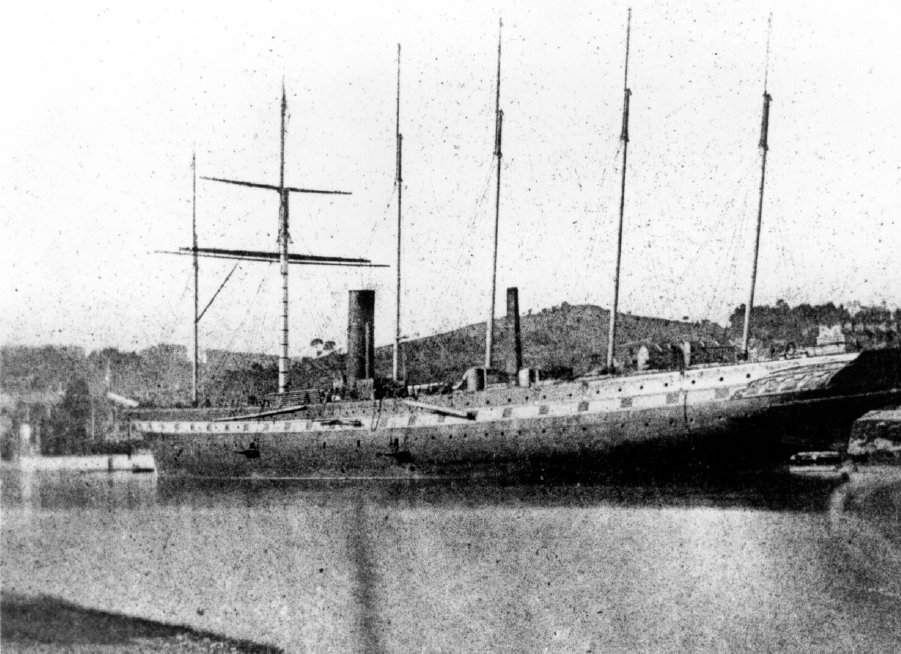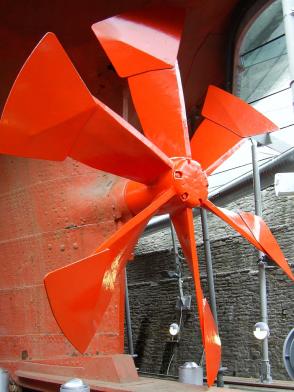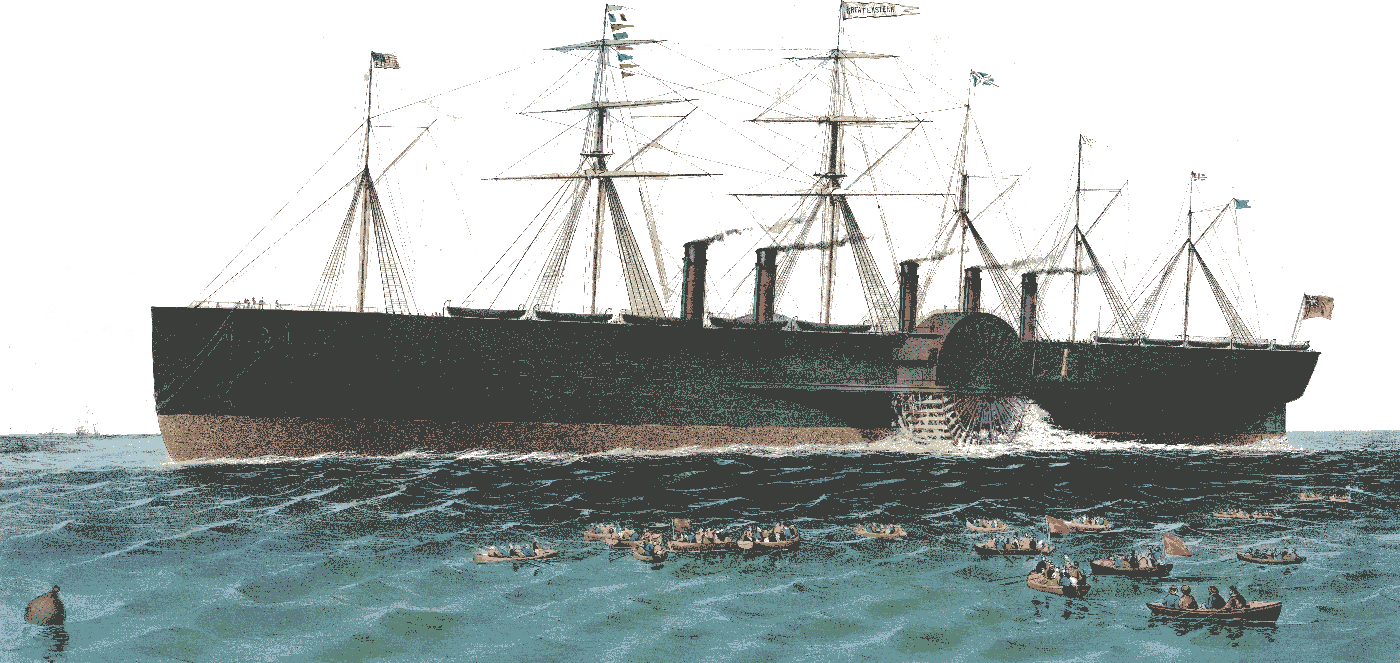SS Great Britain

Isambard Kingdom Brunel had already built one vessel, the Great Western, which had been a traditional paddlewheel and sails design. Then, despite requests that he built a sister ship for the Great Western, for his second vessel Brunel had more ambitious plans. Built in 1843, the SS Great Britain set a number of precedents in engineering design. She was the first ocean-going iron ship, the first with screw propellers, and the forerunner of modern passenger liners. At three hundred and twenty-two feet long, she was also the largest passenger ship then afloat.
Brunel's curved design for the propellers, perhaps aided by his ability to draw a perfect circle freehand, proved so effective that even modern computer-aided design has produced only marginal efficiency improvements. Linked to her one thousand horsepower engine, it was perhaps not surprising that on her maiden voyage across the Atlantic she broke the previous speed record, completing the voyage in only fourteen days.
1846-1881 Australia and beyond
After three successful years on the Britain to America route, in 1846 she ran aground off Ireland. Her salvage cost enough to bankrupt the ship's owners so she was sold on to Gibbs, Bright and Co. In 1851 her new owners had her refitted, including improvements to the engine, and used her to carry immigrants to Australia.
 On the Australia run she was in high demand. In an age where sailing the oceans carried high risks, sailing on the SS Great Britain meant you got there safely, and usually you got there fast. She would eventually sail this route thirty-two times, carrying the first British Cricket team among others. During the Crimean War she was in service as a troop carrier, taking 44,000 troops to the war.
On the Australia run she was in high demand. In an age where sailing the oceans carried high risks, sailing on the SS Great Britain meant you got there safely, and usually you got there fast. She would eventually sail this route thirty-two times, carrying the first British Cricket team among others. During the Crimean War she was in service as a troop carrier, taking 44,000 troops to the war.
In 1882 she was converted to a sailing ship, carrying freight instead of passengers. She would serve in this role for the remainder of her sailing days.
 Abandoned In 1886, the SS Great Britain sought sanctuary in Port Stanley in the Falklands after sustaining damage. Assessed as unseaworthy, she was abandoned in the Falkland Islands, to be used as a floating warehouse and coal store. In 1937 her retirement became less dignified when she was finally scuttled. Left to rust in Sparrow Cove, her glory days past, she was almost entirely forgotten.
Abandoned In 1886, the SS Great Britain sought sanctuary in Port Stanley in the Falklands after sustaining damage. Assessed as unseaworthy, she was abandoned in the Falkland Islands, to be used as a floating warehouse and coal store. In 1937 her retirement became less dignified when she was finally scuttled. Left to rust in Sparrow Cove, her glory days past, she was almost entirely forgotten.
In 1970 it was decided that abandoning such a historic vessel was unacceptable and the SS Great Britain project began the ambitious plan to move her from the Falklands to her home port in Bristol. Loaded onto a specially built pontoon, she was sailed halfway round the world back to Britain. The pontoon was unable to sail up the Avon, and so the ancient vessel was carefully patched and floated one last time. She was then towed, floating on her own, up the river to her home dock.
It would be the SS Great Britain's last voyage as the one hundred and fifty year old hull proved too corroded to be repaired. Instead she was installed in a purpose built dry dock while restoration work began. The 1843 engine was recreated with help from Rolls Royce, as her engine upgrade in 1852 and then the conversion to sail had removed the original. Finally, the majority of the restoration complete, she was open to the public and has remained so ever since as a monument to the great engineer who built her. Is- children's novel
Further Information
Factual information and lots of photographs
History UK site
Back to Topics



